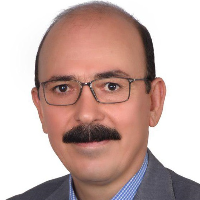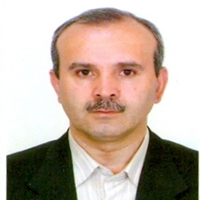Effects of Urea Integration with Manure and Two Types of Compost (Municipal Solid Waste and Sewage Sludge) on Leaf , Stem and Seed Yield of Wheat and their Nitrogen, Phosphorus and Potassium Concentration
Author(s):
Article Type:
Research/Original Article (دارای رتبه معتبر)
Abstract:
Introduction
Chemical fertilizers can supply all the nutrients required by plants, but their high consumptions cause environmental pollution and increased agricultural production costs. Organic fertilizers can improve the biological, physical, and chemical properties of soil and improve soil fertility and productivity. However, these fertilizers alone cannot provide all the requirements of plants for different nutrients. In addition, these fertilizers are not sufficiently available to farmers everywhere. So, in order to increase effectiveness of organic and chemical fertilizers, to decrease environmental pollutions and to achieve sustainable agriculture, integrated application of organic and chemical fertilizers is recommended. Nitrogen (N), phosphorus (P) and potassium (K) are essential elements for plant nutrition and growth. Wheat as a strategic crop is the most important cereal and plays a very important role in human and animal nutrition and health. The deficiencies of N, P and K in the most agricultural soils often reduce the growth and yield of wheat. Therefore, the appropriate concentrations of these nutrients in wheat seed, leaf and stem are important not only for the optimum growth of the wheat plant and its quality improvement but also for the health of humans and animals.
Materials and Methods
This research work was carried out to study the effects of combining farmyard manure (FYM), municipal solid waste compost (MSWC) and municipal sewage sludge compost (MSSC) with different levels of urea on seed, leaf and stem yields of wheat (Triticum aestivum L.) cultivar Alvand and concentrations of N, P and K in seed, leaf and stem in a randomized complete blocks design with 15 treatments and three replications under field conditions at Khalatposhan Agricultural Research Station, University of Tabriz, Tabriz, Iran. The treatments included were: 1) control (without fertilizers), 2) 150 kg urea/ha, 3) 300 kg urea/ha, 4) 30 ton MSWC/ha, 5) 30 ton MSWC/ha + 150 kg urea/ha, 6) 60 ton MSWC/ha, 7) 60 ton MSWC/ha + 150 kg urea/ha, 8) 30 ton MSSC/ha, 9) 30 ton MSSC/ha + 150 kg urea/ha, 10) 60 ton MSSC/ha, 11) 60 ton MSSC/ha + 150 kg urea/ha, 12) 30 ton FYM/ha, 13) 30 ton FYM/ha + 150 kg urea/ha, 14) 60 ton FYM/ha, 15) 60 ton FYM/ha + 150 kg urea/ha. The size of each plot was 2.0m × 1.9m. At the end of growth period, the plants were harvested and different sections of wheat plant (seed, leaf and stem) were separated and the yield of each section was determined. The concentration of N in seed, leaf and stem were then measured by Kjeldahl method. After dry ashing of the seed, leaf and stem samples, the concentrations of P and K in their extracts were measured by spectrophotometer and flame photometer instruments, respectively.
Results and Discussion
The results showed that application of 300 kg urea/ha increased the wheat grain yield and concentrations of N, P and K in seed, leaf and stem but it decreased the stem yield. Application of 150 kg urea/ha had no significant effect on the leaf yield but its integration with 60 ton MSWC/ha significantly increased the leaf yield of wheat. The combining of 150 kg urea with 30 and 60 ton FYM, MSWC and MSSC per hectare increased yields of wheat stem and seed and their N and P concentrations as compared with the control and application of solely organic fertilizers. The use of FYM, MSWC and MSSC significantly increased the wheat grain yield and concentrations of N, P and K in seed, leaf and stem relative to the control but their effects on yields of leaf and stem depended on the type and rate of organic fertilizer. The highest yields of grain, stem and leaf and the highest concentrations of N, P and K in wheat grain, stem and leaf were observed under combined application of 150 kg urea and 60 ton FYM, MSWC and MSSC per hectare. The minimum yields of seed, leaf and stem and the minimum concentrations of N, P and K in different organs of wheat plant were observed in the control treatment. The average wheat yield component was in the order of seed > stem > leaf. The mean concentrations of N, P and K in different sections of wheat were in the order of seed > leaf > stem, seed > leaf > stem and stem > leaf > seed, respectively. The grain yield of wheat had positive and significant correlations (p<0.01) with concentrations of N, P and K in different organs of wheat, which indicates the role of N, P and K nutrition of wheat plant in increasing its seed yield.
Conclusions
The wheat seed had higher concentrations of N and P and lower concentration of K compared to leaf and stem. In general, in order to decrease nitrogen fertilizers use, enhance N, P and K nutrition of wheat plant, improve wheat seed quality, decline environmental pollution and increase wheat yield, application of 150 kg urea and 60 ton manure per hectare is recommended. However, if there is not enough manure, 150 kg urea and 60 ton municipal solid waste compost or municipal sewage sludge compost per hectare can be applied at similar conditions.Keywords:
Language:
Persian
Published:
Journal of water and soil, Volume:33 Issue: 1, 2019
Pages:
63 to 81
magiran.com/p1974860
دانلود و مطالعه متن این مقاله با یکی از روشهای زیر امکان پذیر است:
اشتراک شخصی
با عضویت و پرداخت آنلاین حق اشتراک یکساله به مبلغ 1,390,000ريال میتوانید 70 عنوان مطلب دانلود کنید!
اشتراک سازمانی
به کتابخانه دانشگاه یا محل کار خود پیشنهاد کنید تا اشتراک سازمانی این پایگاه را برای دسترسی نامحدود همه کاربران به متن مطالب تهیه نمایند!
توجه!
- حق عضویت دریافتی صرف حمایت از نشریات عضو و نگهداری، تکمیل و توسعه مگیران میشود.
- پرداخت حق اشتراک و دانلود مقالات اجازه بازنشر آن در سایر رسانههای چاپی و دیجیتال را به کاربر نمیدهد.
In order to view content subscription is required
Personal subscription
Subscribe magiran.com for 70 € euros via PayPal and download 70 articles during a year.
Organization subscription
Please contact us to subscribe your university or library for unlimited access!




